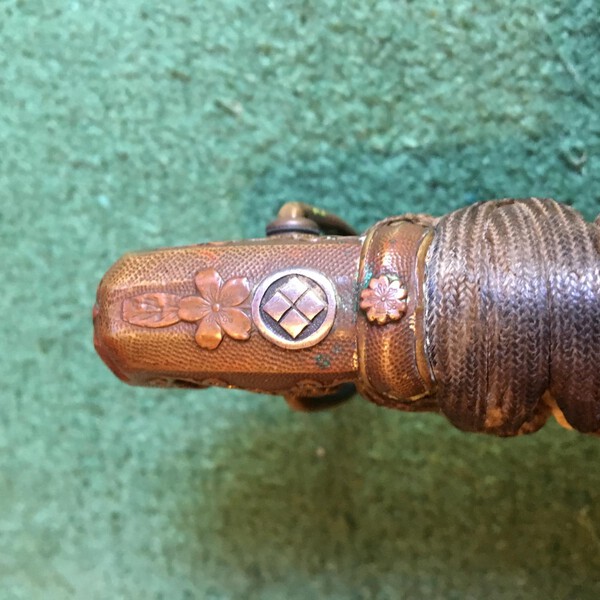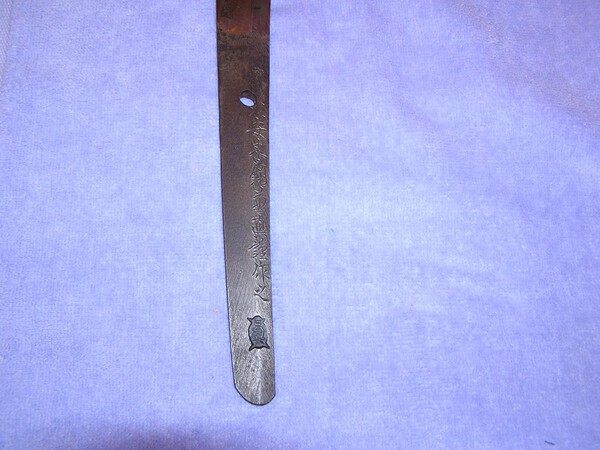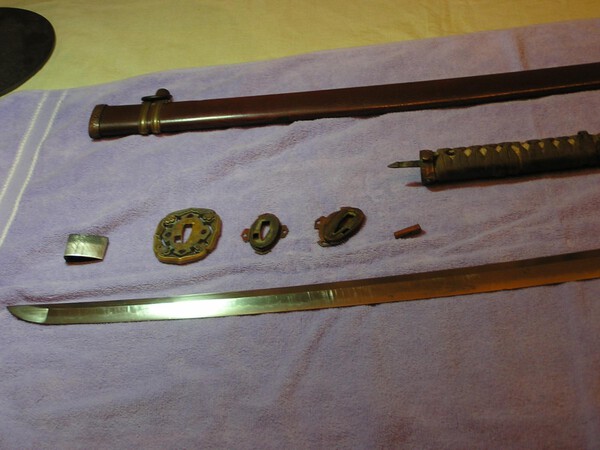-
Posts
256 -
Joined
-
Last visited
Content Type
Profiles
Forums
Events
Store
Downloads
Gallery
Everything posted by Austus
-

Photographing activities in blades
Austus replied to AndyMcK's topic in General Nihonto Related Discussion
Thanks, Hawley. Simple is what makes digital good. When you have manual settings, I'm lost. I'm really struggling with macro photography. Might need a newer camera. Still using an old Olympus with 3.5 megapixels. It makes for smaller file sizes; but is probably outdated. Like me. -

Photographing activities in blades
Austus replied to AndyMcK's topic in General Nihonto Related Discussion
Thanks, Uwe. Nice Gassan! Photoshop is a wonderful tool. It shouldn't be a dirty word; unless it's used to change the reality, or cheat. -

Photographing activities in blades
Austus replied to AndyMcK's topic in General Nihonto Related Discussion
Okay, don't use the mobile phone, got that. But for those of us not familiar with brand names or cameras in general, could y'all differentiate between digital and analog cameras in these replies? And, BTW, is one better than the other for this subject? -
Malcolm, Sir: So glad I asked. Thank You. Wow.
-
Well, George, this is an interesting yet surprising thread. I've learned quite a bit about my sword, Thank You very much; but it seems to be an exception in many ways. I might add that its furniture all has matching numbers: #1. I'd like to think that it belongs in the Gendaito category; but then there's that Yasuki steel. Wish we could ask Kanezane what he thought. Malcolm, what a valuable resource you are! Thank You for your continuing input to this Forum. There's a small difference in the spacing between the other mon. Very small. Is that the answer? (If you respond, could you tell us your martial art, too?)
-
-
I've got an Asano Kanezane sword with a mon; but it's made with Yasuki steel, so is not considered to be traditional. Kanezane worked in Seki; but your term "usual seki made showato" may not apply. Maybe insert "arsenal blade" in the definition? Supposedly, 70% of the wartime blades were made in Seki. I'll be surprised if you don't end up finding many with mons. Especially since there didn't seem to be any requirements for mon use or meaning. Anybody could use any one they wanted. I found that surprising, even a little weird.
-

Mei or Gimei - Minatagawa Blade Help!
Austus replied to Bruce Pennington's topic in Translation Assistance
Bruce, it looks like dremel tool tracks in the kissaki... I'm sure you noticed them. The rust patterns look fishy and/or cleaned around the mei. That spidery rust is shocking. But it's an interesting hamon. I'd pass. Especially if the price isn't low. -
Makes perfect sense. The old way is not always the best way.
-
That's where I was hoping you were going with this! But if you eliminate niku, the study will be flawed in many ways. Have you considered scanning blades from different eras, or schools, or certified cutting champions to find out what works best? Geometry of design should transcend steel types or manufacturing techniques. What's the optimum edge angle in relation to the niku and placement of the shinogi, for example? Does it stay the same? (Etc., etc...) You could compare any element in the equation against your own models or others. Sword Dynamics could be its own Science! Just sayin'.
-
Great specimen, Dean; beautiful sword. You will never be sorry you bought it. Enjoy!
-

Favorite Era for Sword Making
Austus replied to Blazeaglory's topic in General Nihonto Related Discussion
Hey, Dwain, Thanks for agreeing with me... hope it doesn't get you in trouble! Showa era is listed as 1926 to 1989; but I'm really talking about the war years. After the war, the emphasis was no longer on funtional weapons; which is why I am leery about modern swords. The smiths needed to make huge numbers of swords; and much knowlege had been lost. But they experimented and tested and struggled with resources; and did the best they could. I wholeheartedly agree with your statements! -
I saw one of these recently. It had been purchased at an estate sale for $5. My guess is it's a Chinese post-war souvenir item. The leather cover was very nice; but the "blade" was unpolished; and the ito appeared to be real silk; but there were no menuki, like this one. This one has a nice fuchi/tsuba match; but it isn't trying too hard to be real. Curious.
-
On some of those moves, it looks like she is striking with the tsuka. Is that what's happening? This will make me look at those sweet Japanese women a little differently.
-
Aren't you glad you asked? You should be. Too many others paid too much and then couldn't get get what they really wanted. Now you can start figuring out what you really want.
-
That's an interesting question, Mark; and I hope you get a lot of responses to it. But why ignore niku? That's the key to the cutting dynamics; and without it, you're probably not looking at a Nihonto. Those cross sections look more like the Chinese backyard cutters that don't have to take into account the conditions that a true sword will face. Without niku, there's no support for the edge; it will curl, or worse. There's also a issue called drag; which has something to say in the shinogi and mune design. As posed, this question sounds like one that would be posed to a polisher. About the edge angle... is there any perfect one? That's also influenced by the niku, and the battle applications. Don't get me wrong, I love this geometry stuff! Blade design is absolutely fascinating.
-
Good looking sword in great condition, nice hamon, respected smith, etc. Buy it!!
-

Favorite Era for Sword Making
Austus replied to Blazeaglory's topic in General Nihonto Related Discussion
Showa. For many reasons: First of all, they're the ones I encounter 95% of the time at militaria and gun shows. More importantly, my retirement budget doesn't allow purchases of fine Nihonto. It doesn't make sense, at my age, to try and learn about the thousands of smiths from the past; when I will probably never own or even see specimens of fine quality and history. They might not be Art Swords, but they are definitely real swords, the last combat battle swords ever made. They were made with a mission by the same culture that brought us past masterpieces, only this time they're using technology, new steels, and fresh experience from the battlefield about what works, and what breaks. They come in a wide range of quality and styles. You never know what will come out of that gunto koshirae; maybe a real Nihonto; but probably a warrior sword from the recent past, still wearing grease and grime from a brutal conflict that helped shape our present world. Their history is fresh; and some of our relatives faced them. -

Sharpness of a sword? Auction problem
Austus replied to vajo's topic in General Nihonto Related Discussion
Fraud involves deception with intent, usually in order to profit unfairly. You did none of that. Unfortunately, the buyer is not being fair. The auction house should know that. -
Thanks, Jean, I did notice that search button. Probably should have typed in the entire link, instead of just part of it. But then, I would have missed that additional link you provided. What a gorgeous lineup! The only good reason to let go of a masterpiece is to get one better, or more to your liking. In the process, Jeremiah's dream came true, too. Everybody wins!
-
Yes, some of us would like to see those blades! Especially the lovely hamon you mentioned. Don't tease us like that!
-
Thank You, Jeremiah, for providing those links. The Norikatsu is a stunner, indeed. Unfortunately, the Hosho/Tegai link didn't work. I will try and find it via search. Maybe you should post them here... I'm sure that many others would enjoy seeing these high quality blades! No offense taken, BTW. It was pretty funny.
-
I think those are some great shots of a gorgeous sword. Could you tell more about it?
-
Okay, Jeremiah and Guido, you guys are funny! I looked at the list of your previous posts hoping to find those blades; but it's quite a list. Could you point out which ones contained the blades?





